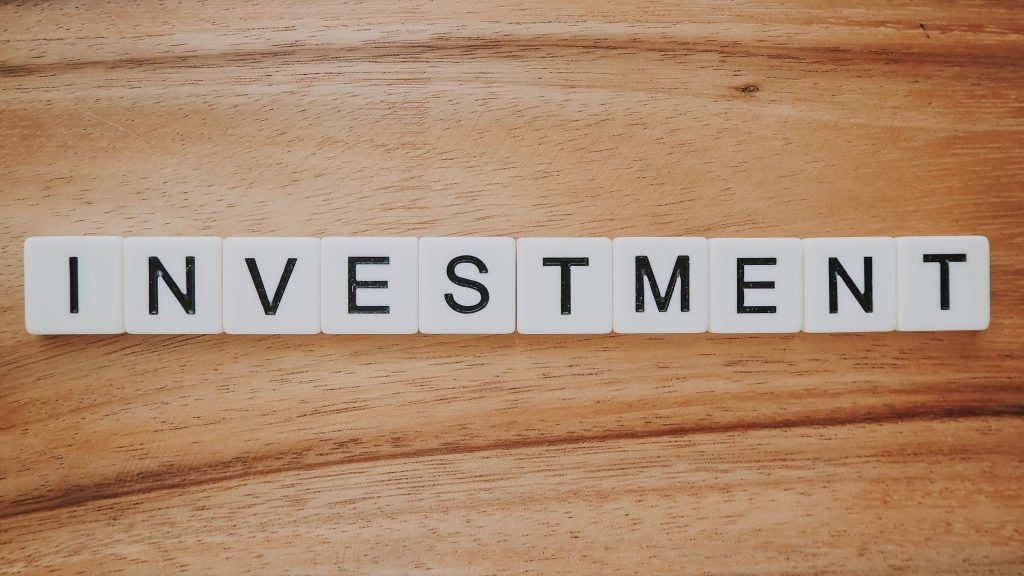

Finance
A Guide To Passive Investing For Beginners
Modified: September 6, 2023
Discover how you can grow your money quickly through passive investing. Find all your answers within our all-encompassing guide for beginners.
(Many of the links in this article redirect to a specific reviewed product. Your purchase of these products through affiliate links helps to generate commission for LiveWell, at no extra cost. Learn more)
Passive investing destroys the big misconception about investing, it is that it is exclusive to the rich and wealthy.
At some point in the past, this may have been considered a fact, but the wall has been toppled, destroyed by companies and organizations that made it a point to make investing easily available for most of the public. This includes beginners and those who have limited cash to work with.
Truth is there are several investments that are open to beginners and so it is inexcusable to say you don’t have enough to jump on the bandwagon. Investing your money is one of the best ways to financial independence.
Investment Methods: Active V.S. Passive Investing
There are two methods of investing – active and passive investing. While both have their advantages, how you invest your money depends on how you want your investing experience to be.
Active investing, as the name implies, refers to investing with a more hands-on approach. An individual is assigned to the role of a manager that handles your portfolio.
A portfolio manager also manages a group of analysts. These analysts focus on qualitative as well as quantitative elements of the market. This, in turn, helps the team gain confidence in identifying the perfect time to buy or sell shares of stocks, bonds, and/or assets.
If you have decided that active investing is for you, you should have one main focus. That is to beat the stock market’s average returns as well as to take advantage of price fluctuations within the market.
As this is a hands-on approach, much time, analysis, and quick decision-making are needed for your equity investment to grow.
On the other hand, passive investing is the complete opposite of active investing. It aims to maximize returns with less buying and selling. Once acquired, the strategy is to hold on to the investment for a long time, without any regard for price fluctuations and market setbacks. Even downturns in the market are not a cause for alarm when it comes to passive investing.
If you’re a passive investor, do note that it usually requires some self-control in order to not act on impulse according to the fluctuating market. The aim is to equal the average returns of the stock market and so your passive investments do not employ an aggressive strategy akin to active investing.
Advantages Of Passive Investing
Taking the route toward passive investing can be beneficial not only in the long run but right from the get-go. From low fees to extra savings in taxes, passive investing lets you start saving the moment you start investing.
Here are just some of the major benefits of passive investing:
• Low-cost: Unlike with active investing, passive investing does not require a portfolio manager and a team of analysts to help you out. With this alone, you already save a ton of cash compared to active investing in terms of costs. Annual charges investors pay for active investments are at a high of 0.75%; a significant fee when compared to less than 0.1% for passive investments.
• Fewer Taxes: Almost everything gets taxed, even investments. Because there is less buying and selling of equity investments in passive investing, investment-related taxes are lower than that of active investing.
Disadvantages Of Passive Investing
While passive investments work for most investors, some would argue on the supposed weaknesses of this investment strategy.
Here are a few:
• Limited Index: When investing in passive funds, your funds are contained to specific indices. Your set of investments has no variation and thus, there is a feeling of being locked into these, and these assets only.
• Smaller Returns: Passive investments will never be able to provide you with bigger rewards instantaneously compared to that of active investors. This is because passive investments do not mean to overtake returns of the market. If the market slows, so do your passive investment returns.
While passive investments yield smaller returns, the risks are smaller compared to that of active investments. And while active investments result in great returns in such a short period, the returns provided by passive investments are slow but sure.
Common Examples of Passive Investing:

Photo from Unsplash
Dividend Stocks
One tried and tested method of passive investing are dividend stocks. Before investing, make sure to do a lot of research on which stocks are best to invest in. Once decided, you can invest a large amount of your money for you to be able to receive equally large amounts in dividend checks.
If you are, however, consistent with purchasing and growing your equity investments, you can eventually accumulate your investments and receive decent amounts of income over time.
CD (Certificate Of Deposits) Ladders
CDs or certificates of deposits, are being issued by banks in increments for you to be able to earn returns for the money you invest. They are low risk and relatively low yield. If you are not comfortable with risking a larger sum in investments, for now, you can start with building CD ladders.
Building a CD ladder is a bit complicated as compared to some other methods. Additionally, the yield may not be too high. Better than nothing, though. At the end of the day, it is still a source of passive income.
High Yield Savings Accounts/Money Market Funds
One of the best options for passive investments, that also generates a high return, is putting your money in high yield savings accounts or money market funds.
When doing this, it matters where you put your money. High yield savings accounts are usually at banks. On the other hand, banks and investment organizations support money market funds.
This type of investment grows your money well as interest rates have been consistently rising, so putting your hard-earned cash here can generate a steady and comfortable income.
Annuities
Purchasing annuities may be a bit tricky. Therefore, when you are planning to purchase annuities, it would be best to consult a financial advisor for guidance.
Annuities are insurance products you purchase which give you passive income through regular payments. The terms may differ from one product to another, most of which yield smaller amounts.
In cases where you prefer to diversify, you can always purchase varying annuities. Through this, you can diversify not only your assets but also your source of passive income.
The Stock Market
While the stock market is popular amongst active investors, there are still ways to passively invest in it. One such way is through a Robo-advisor. As the name suggest, it is a financial advisor in the form of a robot.
Spend a few minutes building your profile by answering questions and the system will take care of the rest. Talk about a truly passive investment!
Invest In A Business
Another risky passive investment is putting your money into a business. Most businesses need additional investments to fund their operations or projects for continuity purposes.
You can look into businesses that go public via IPO, research on risks and yield-potential, invest, and be a silent partner.
While this option may be a bit risky, the yield will be high if you do it right. However, if you would like to reduce the risk, spread the money around. Invest in numerous businesses in the market. As you spread your money around, you spread the risks as well.
However, if you are confident with the business you are investing your money into, similar to a lazy portfolio of investing in a single fund, investing in a single business is also something you can do.
In Conclusion…

Photo from Unsplash
There are still a lot more different options you can take for your money to grow.
Options like investing in a lazy portfolio or rental properties are also very common these days.
In this age and time, putting your money aside is no longer viable. It will never provide for you in the future, what with the inflation rates ballooning regularly. And with the high inflation rates, there is a lowering of purchasing power.
It is never enough to just put aside some money somewhere. Grow your money. Invest. Let’s see where your extra cash will take you.
You might also want to check out our Definitive Guide To Investing For Dummies!














